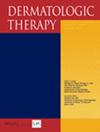Sorafenib-Related Dermatologic Toxicity: A Comprehensive Evaluation Based on Disproportionality Analysis and Clinical Characteristics
Abstract
Objective
Recognized as the primary treatment for unresectable hepatocellular carcinoma (HCC) and as an approved therapeutic agent for renal cell carcinoma (RCC) and differentiated thyroid carcinoma (DTC), sorafenib is often limited in long-term clinical application due to dermatologic toxicity, which may necessitate dose modifications or even treatment discontinuation. The present study sought to comprehensively characterize these toxicities through mining of the Food and Drug Administration Adverse Event Reporting System (FAERS).
Methods
Using FAERS reports collected between the first quarter (Q1) of 2018 and Q1 of 2023, we applied disproportionality analysis, calculating reporting odds ratios (RORs) to compare sorafenib-related dermatologic toxicity with the overall database. Comparisons were made between serious and nonserious reports, followed by signal prioritization using a predefined scoring system. To evaluate the consistency of these findings, stratification analyses were undertaken. Moreover, univariate logistic regression was applied to investigate potential determinants of sorafenib-related dermatologic AEs.
Results
Reports of dermatologic toxicity accounted for 32.36% of the overall sorafenib reports during the study period, and 72 adverse events (AEs) were defined as sorafenib-related dermatologic toxicity. Reports of sorafenib-associated dermatologic toxicity indicated a median patient age of 64 years (interquartile range [IQR] 56–72) and a median time-to-onset (TTO) of 11 days (IQR: 0.5–37.5), with serious outcomes accounting for 89.07% of cases. Besides, 1, 15, and 16 AEs were identified as signals with strong, moderate, and weak clinical priority, respectively, all displaying an early failure pattern. Sex and reporter types were significant influencing factors for sorafenib-associated dermatic AEs (male: OR = 0.667 [0.577–0.772], p < 0.01; healthcare professional: OR = 0.760 [0.661–0.874], p < 0.01).
Conclusions
This study characterized the clinical features, TTO, severity profiles, clinical prioritization, and influencing factors of sorafenib-associated dermatologic toxicities. The findings offer supportive evidence to aid clinicians in managing AEs, thereby enhancing patient adherence and therapeutic outcomes.


 求助内容:
求助内容: 应助结果提醒方式:
应助结果提醒方式:


